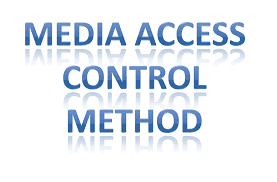The world of computer networking thrives on seamless communication between devices. But how do multiple devices ensure smooth communication without interference or collision on a shared medium? The answer lies in the Media Access Control (MAC) method. It acts as a set of rules or a “traffic light” system, determining how data can be transmitted between multiple devices over shared networks.
In this article:
- What is Media Access Control Method?
- Types of Media Access Control Methods
- Why Understanding MAC Methods Matters
- Frequently Asked Questions (FAQs)
- Conclusion
- References
1. What is Media Access Control Method?
Media Access Control Method is a protocol that ensures only one device transmits data at a given time on a network. When multiple devices aim to communicate simultaneously, there’s a risk of data collision which can corrupt the transmitted information. MAC methods manage this potential chaos, ensuring smooth, collision-free communication.

Implemented at the data-link layer of the seven-layer Open Systems Interconnection (OSI) reference model, MAC methods are fundamental for reliable network communication.
2. Types of Media Access Control Methods
Understanding the different MAC methods is crucial for anyone delving into computer networking. Here’s a deeper dive into the four primary MAC methods:
- Carrier Sense Multiple Access with Collision Detection (CSMA/CD):
- Usage: Predominantly used in Ethernet networking.
- How it works: Devices check the network’s signal before transmitting data. If the network is clear, they send the data. If two devices transmit simultaneously, a collision is detected, and each device attempts to resend their data after a random time delay.
- Carrier Sense Multiple Access with Collision Avoidance (CSMA/CA):
- Usage: Found in AppleTalk networking and Wi-Fi.
- How it works: Similar to CSMA/CD, but instead of waiting for a collision, CSMA/CA tries to avoid it altogether. Before sending data, devices listen for the network to be free and then transmit, reducing the chances of collisions.
- Token Passing:
- Usage: Employed in Token Ring and Fiber Distributed Data Interface (FDDI) networking.
- How it works: A “token” is passed around devices in the network. Only the device holding the token can transmit data. After transmitting, the token is released for other devices to use, ensuring orderly and collision-free communication.
- Demand Priority:
- Usage: Utilized in 100BaseVG networking.
- How it works: Devices send requests to a hub, which then prioritizes the requests. The hub allows the highest priority device to transmit first. It ensures faster data transmission for high-priority devices.
3. Why Understanding MAC Methods Matters
The efficiency of a network is closely tied to the Media Access Control method it employs. Choosing the right MAC method can optimize network communication, minimize data collisions, and enhance the overall user experience. Whether you’re setting up a home network or a large enterprise system, understanding MAC methods can be pivotal.
Dive Deeper into Network Cabling
To truly grasp the importance of efficient data transmission and the role of MAC methods, one must also understand the underlying physical infrastructure: network cabling. Proper cabling is the backbone of any reliable network. Explore our comprehensive guide on “Mastering Network Cabling: The Secrets of Reliable Connections,” to enhance your knowledge about the art and science of effective network cabling.
4. Frequently Asked Questions (FAQs)
- What is the primary purpose of Media Access Control methods?
- The main objective is to manage how devices transmit data on a network, ensuring that only one device sends data at a time to prevent collisions.
- Why is CSMA/CD primarily associated with Ethernet networking?
- CSMA/CD was specifically designed for Ethernet networks to detect collisions and manage data retransmission efficiently.
- How does Token Passing avoid data collisions?
- By using a “token” system, only the device with the token can transmit data, ensuring orderly communication without overlaps.
- Is one MAC method superior to others?
- The best method depends on the specific requirements and context of the network. Each method has its advantages and scenarios where it’s most effective.
- How do MAC methods relate to network cabling?
- MAC methods and network cabling are both fundamental to reliable network communication. While MAC methods manage data transmission, the quality and type of cabling can affect data transfer speeds and integrity.
5. Conclusion
Media Access Control methods are foundational in ensuring smooth communication in computer networks. By dictating how and when devices communicate, they minimize data collisions and enhance network reliability. As the digital world continues to grow, understanding these methods becomes more vital than ever.
6. References
- Tanenbaum, A. S., & Wetherall, D. J. (2011). Computer Networks. Prentice Hall.
- Stallings, W. (2014). Data and Computer Communications. Pearson.
- IEEE Standards. 802.3-2002 – Carrier Sense Multiple Access with Collision Detection (CSMA/CD) Access Method and Physical Layer Specifications. IEEE.
- Zimmerman, J. (1987). Paper: OSI Reference Model—The ISO Model of Architecture for Open Systems Interconnection. UCSD.